About Deceptive site ahead
Deceptive site ahead is a legitimate warning that pops up when you are about to enter a dangerous website. With so many scams resembling this legitimate warning, we wouldn’t be surprised if you were suspicious. However, Google does really prevent you from entering malicious sites, and it does show you a warning message. Generally, the legitimate message would say that the site you are about to enter may try to trick you into installing questionable software or revealing your personal information. You wouldn’t be able to enter the website at all, and the only option would be to click “Back to safety”, which would lead you to Google. This message is essentially a security mechanism to prevent users from harming their computers. If you do see this message, there is no need to worry or do anything because it does not mean that you have some kind of infection on your computer. It simply means that you were about to enter a dangerous site. 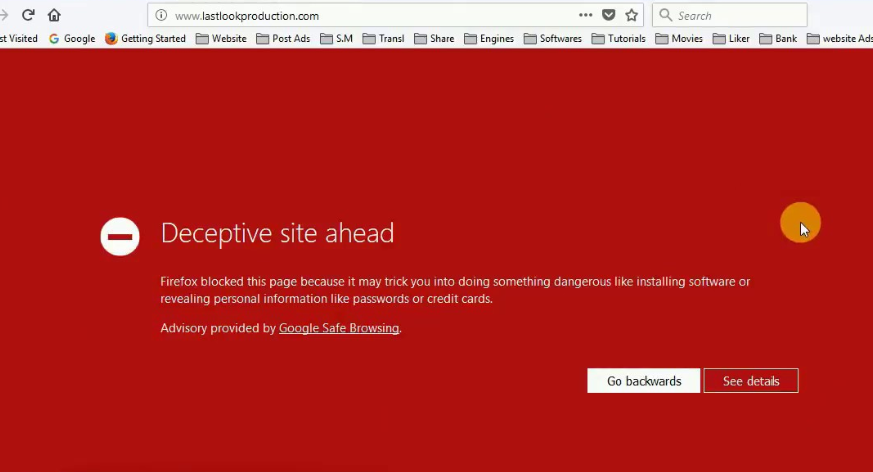
However, do keep in mind that what you are seeing on your screen may not necessarily be the legitimate warning. Tech-support scams can easily imitate such warnings. However, it’s not difficult to differentiate legitimate ones from scams. If you are asked to call a certain number or install software, you are dealing with a scam. Google’s Deceptive Site Ahead warning does not ask you to do anything. Nor does any other legitimate warning. Warnings that have a phone number are called tech-support scams because they want users to call fraudulent tech-support, who would trick users into purchasing useless software. Alternatively, scam warnings would ask that users install a supposed security program in order to clean the computer.
You do not need to delete Deceptive site ahead or do anything if you are dealing with the legitimate warning. However, if you’re constantly shown warnings with phone numbers on them, or are asked to install a certain program, you could be dealing with adware.
Scam warnings could be caused by adware
First of all, we should mention that adware could show you fraudulent malware warnings. Adware is not a serious infection, albeit incredibly annoying, as long as you don’t interact with the ads. In order to make revenue, it would constantly bombard you with ads. Among them would be fake notifications about malware on your computer. They would claim that some kind of malware is stealing your information and various logins, and that in order to stop this from happening, you would need to call the provided number or install the offered software. It goes without saying that you don’t need to call anyone or install the offered program, as there is nothing wrong with your computer.
If you did call, you would be connected to professional scammers who scam gullible people for a living. They would introduce themselves as legitimate technicians from Microsoft or Apple, and request that you allow them to remotely connect to your computer. If you allow that, they would install dubious programs onto your computer and possibly steal important-looking files. If, for example, you have a document named “Passwords”, you can be sure that they will take it. By the end, the fake technicians would ask that you pay a couple of hundred dollars for the service. Since there was nothing wrong with your computer in the first place, if you agree to pay you would be paying for nothing.
You may also be asked to download a certain program. The fake warning would claim that your computer is infected with serious malware, to get rid of which you would need to install the offered program. The program that you would be recommended to install wouldn’t actually be a security tool. It would likely be some kind of unwanted program or malware. Again, warnings that offer you to download software are never legitimate.
These fraudulent warnings are usually brought about by adware. The unwanted program can be installed accidentally by users who install popular freeware programs. Adware is attached to freeware as an extra offer, which needs to be deselected. To deselect such offers, you need to opt for Advanced (Custom) settings when installing freeware. Those settings will make all offers visible and allow you to deselect everything. After you have unchecked all the boxes, you can continue installing the freeware safely.
Legitimate “Deceptive site ahead” warnings
As we’ve said above, Google (or your anti-virus program) does show warnings when you are about to enter a known malicious site. However, you would not be asked to install anything or call anyone. The warning would simply say that the site you are about to enter may compromise your security by either asking you to install questionable software or by requesting your personal information. The legitimate warning would give you a “Back to safety” option, but would not ask you to do anything.
Deceptive site ahead removal
If you are seeing legitimate warnings, you don’t need to remove “Deceptive site ahead” warnings. They will appear only when you’re about to enter a deceptive website. However, if you are seeing fraudulent warnings all the time, you may be dealing with adware, to get rid of which you may need to install anti-spyware software. Simply choose the program that best fits your needs and allow it to get rid of the adware.
Offers
Download Removal Toolto scan for Deceptive site aheadUse our recommended removal tool to scan for Deceptive site ahead. Trial version of provides detection of computer threats like Deceptive site ahead and assists in its removal for FREE. You can delete detected registry entries, files and processes yourself or purchase a full version.
More information about SpyWarrior and Uninstall Instructions. Please review SpyWarrior EULA and Privacy Policy. SpyWarrior scanner is free. If it detects a malware, purchase its full version to remove it.

WiperSoft Review Details WiperSoft (www.wipersoft.com) is a security tool that provides real-time security from potential threats. Nowadays, many users tend to download free software from the Intern ...
Download|more


Is MacKeeper a virus? MacKeeper is not a virus, nor is it a scam. While there are various opinions about the program on the Internet, a lot of the people who so notoriously hate the program have neve ...
Download|more


While the creators of MalwareBytes anti-malware have not been in this business for long time, they make up for it with their enthusiastic approach. Statistic from such websites like CNET shows that th ...
Download|more
Quick Menu
Step 1. Uninstall Deceptive site ahead and related programs.
Remove Deceptive site ahead from Windows 8
Right-click in the lower left corner of the screen. Once Quick Access Menu shows up, select Control Panel choose Programs and Features and select to Uninstall a software.


Uninstall Deceptive site ahead from Windows 7
Click Start → Control Panel → Programs and Features → Uninstall a program.


Delete Deceptive site ahead from Windows XP
Click Start → Settings → Control Panel. Locate and click → Add or Remove Programs.


Remove Deceptive site ahead from Mac OS X
Click Go button at the top left of the screen and select Applications. Select applications folder and look for Deceptive site ahead or any other suspicious software. Now right click on every of such entries and select Move to Trash, then right click the Trash icon and select Empty Trash.


Step 2. Delete Deceptive site ahead from your browsers
Terminate the unwanted extensions from Internet Explorer
- Tap the Gear icon and go to Manage Add-ons.

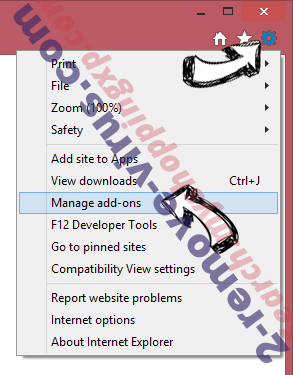
- Pick Toolbars and Extensions and eliminate all suspicious entries (other than Microsoft, Yahoo, Google, Oracle or Adobe)

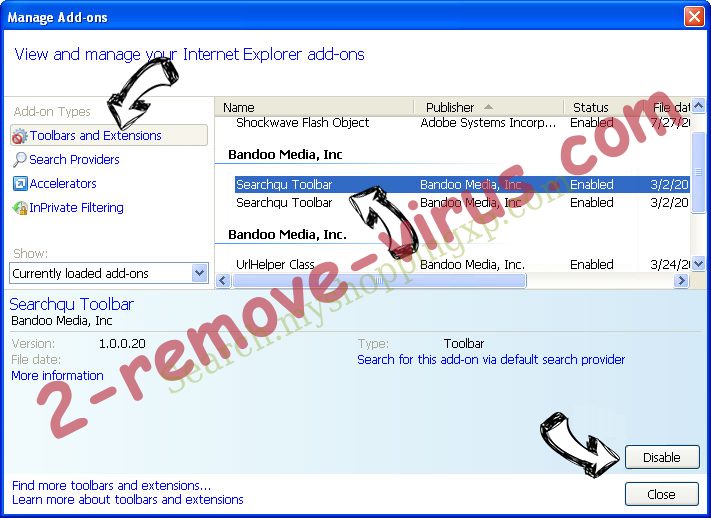
- Leave the window.
Change Internet Explorer homepage if it was changed by virus:
- Tap the gear icon (menu) on the top right corner of your browser and click Internet Options.


- In General Tab remove malicious URL and enter preferable domain name. Press Apply to save changes.

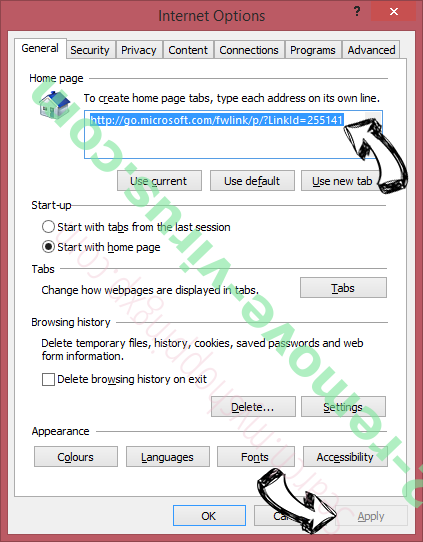
Reset your browser
- Click the Gear icon and move to Internet Options.

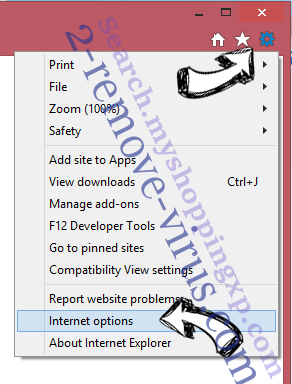
- Open the Advanced tab and press Reset.

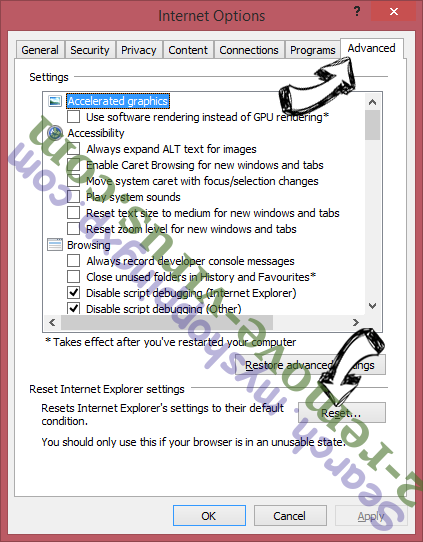
- Choose Delete personal settings and pick Reset one more time.

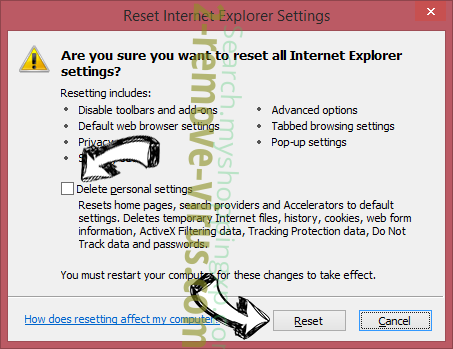
- Tap Close and leave your browser.

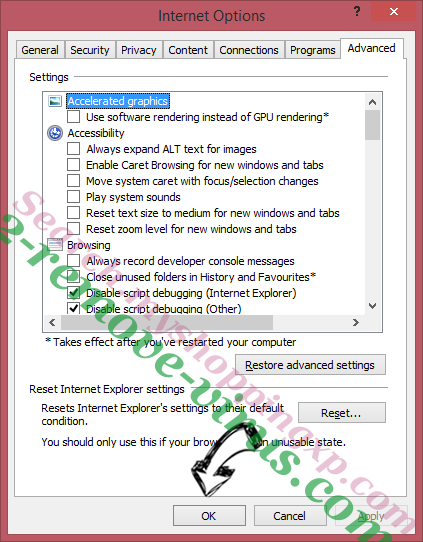
- If you were unable to reset your browsers, employ a reputable anti-malware and scan your entire computer with it.
Erase Deceptive site ahead from Google Chrome
- Access menu (top right corner of the window) and pick Settings.

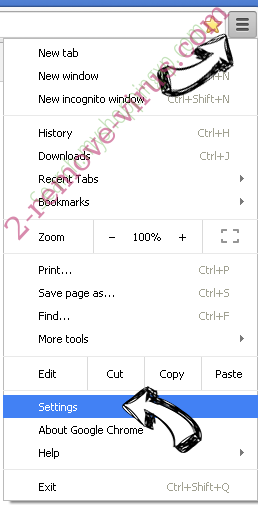
- Choose Extensions.

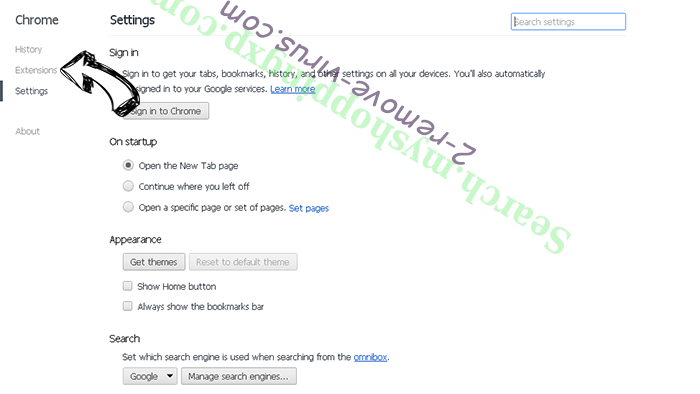
- Eliminate the suspicious extensions from the list by clicking the Trash bin next to them.

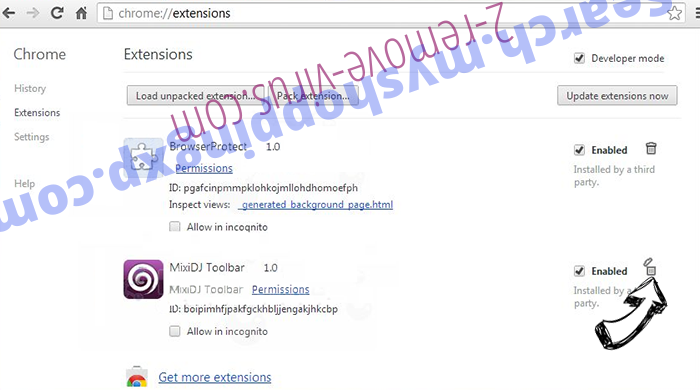
- If you are unsure which extensions to remove, you can disable them temporarily.

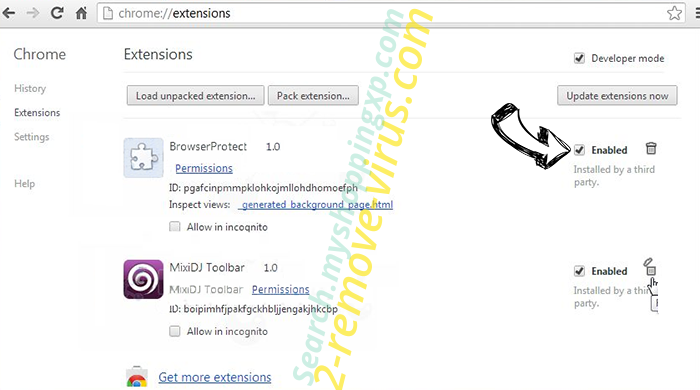
Reset Google Chrome homepage and default search engine if it was hijacker by virus
- Press on menu icon and click Settings.


- Look for the “Open a specific page” or “Set Pages” under “On start up” option and click on Set pages.

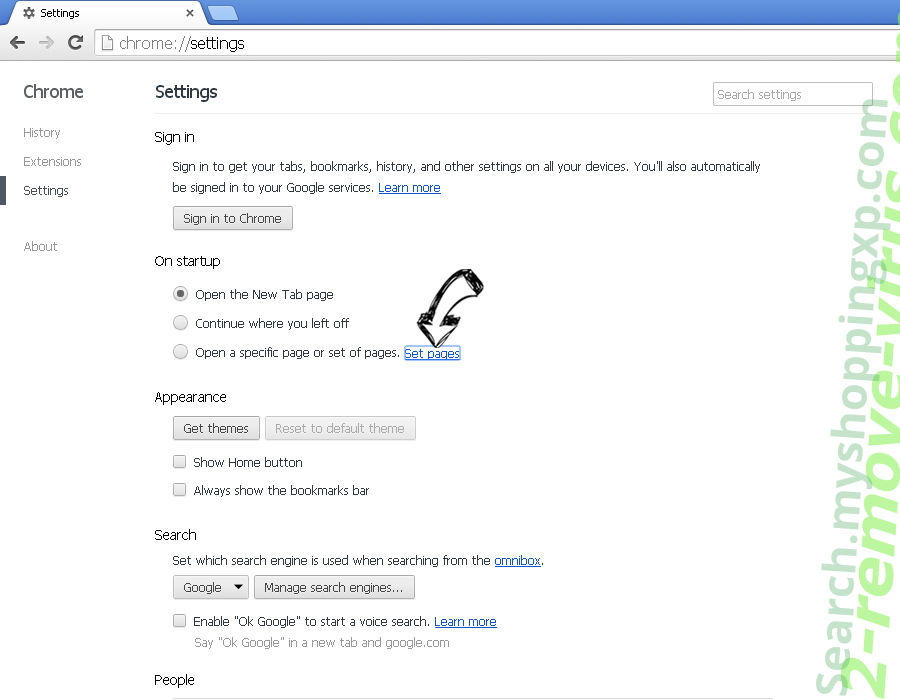
- In another window remove malicious search sites and enter the one that you want to use as your homepage.


- Under the Search section choose Manage Search engines. When in Search Engines..., remove malicious search websites. You should leave only Google or your preferred search name.



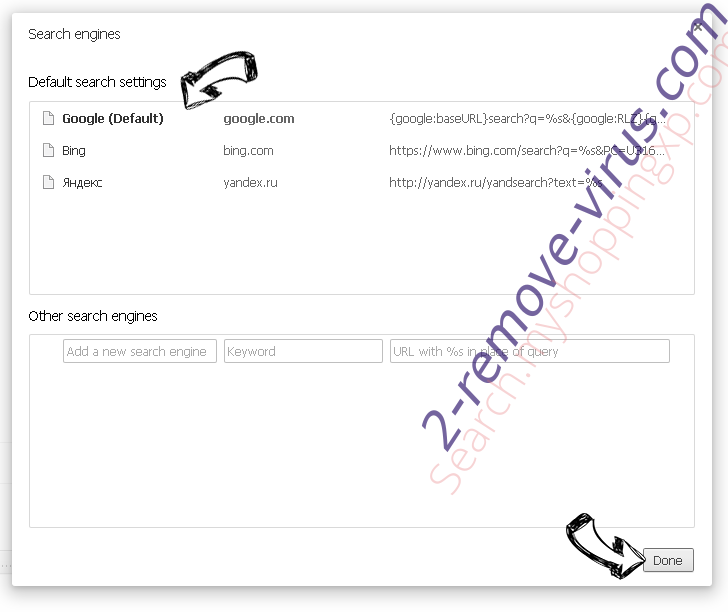
Reset your browser
- If the browser still does not work the way you prefer, you can reset its settings.
- Open menu and navigate to Settings.

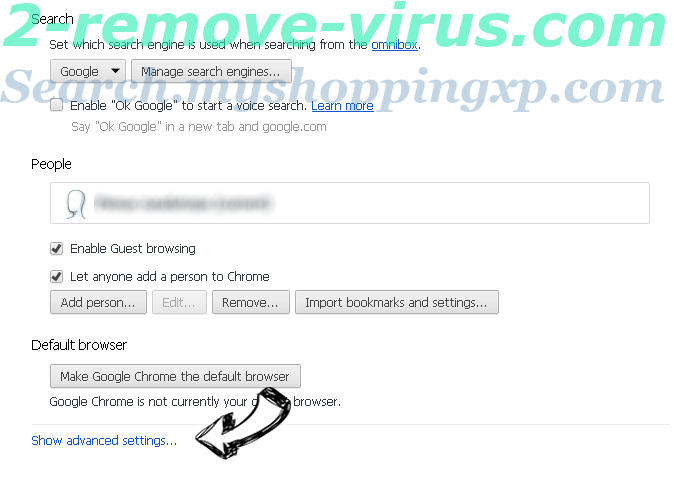
- Press Reset button at the end of the page.

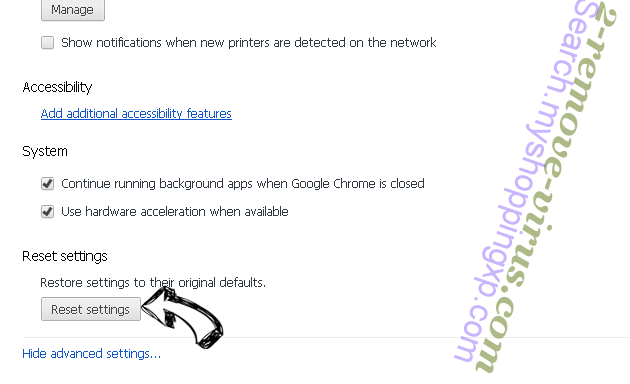
- Tap Reset button one more time in the confirmation box.

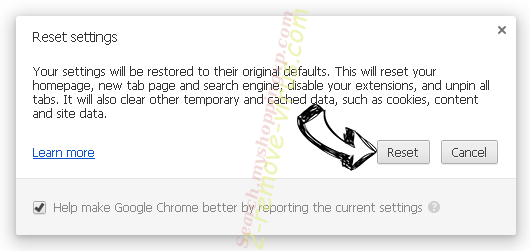
- If you cannot reset the settings, purchase a legitimate anti-malware and scan your PC.
Remove Deceptive site ahead from Mozilla Firefox
- In the top right corner of the screen, press menu and choose Add-ons (or tap Ctrl+Shift+A simultaneously).


- Move to Extensions and Add-ons list and uninstall all suspicious and unknown entries.

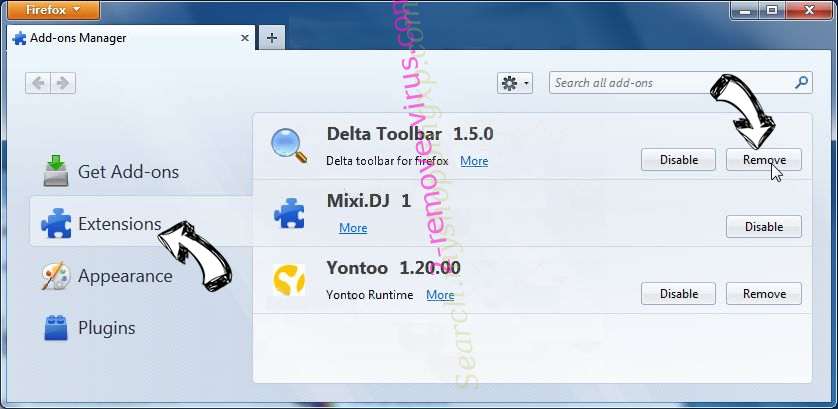
Change Mozilla Firefox homepage if it was changed by virus:
- Tap on the menu (top right corner), choose Options.


- On General tab delete malicious URL and enter preferable website or click Restore to default.

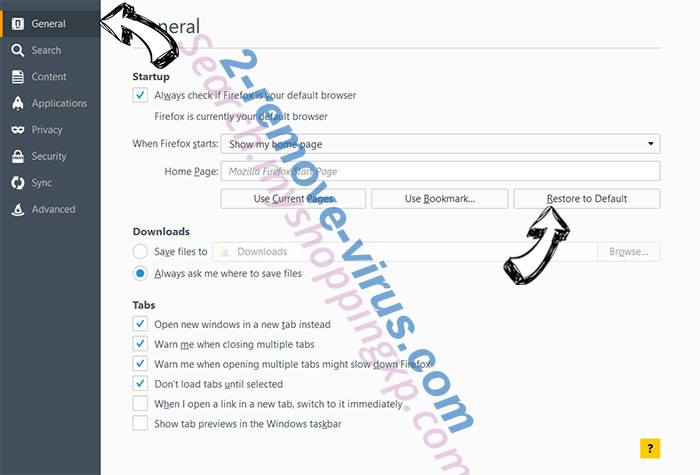
- Press OK to save these changes.
Reset your browser
- Open the menu and tap Help button.


- Select Troubleshooting Information.


- Press Refresh Firefox.


- In the confirmation box, click Refresh Firefox once more.


- If you are unable to reset Mozilla Firefox, scan your entire computer with a trustworthy anti-malware.
Uninstall Deceptive site ahead from Safari (Mac OS X)
- Access the menu.
- Pick Preferences.


- Go to the Extensions Tab.

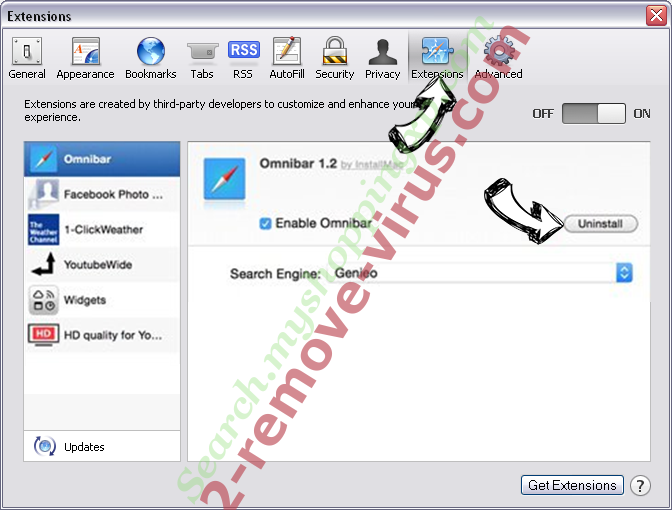
- Tap the Uninstall button next to the undesirable Deceptive site ahead and get rid of all the other unknown entries as well. If you are unsure whether the extension is reliable or not, simply uncheck the Enable box in order to disable it temporarily.
- Restart Safari.
Reset your browser
- Tap the menu icon and choose Reset Safari.

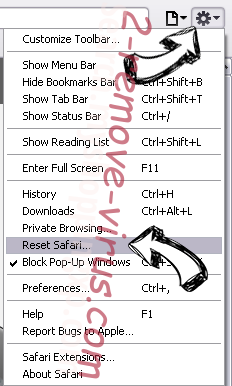
- Pick the options which you want to reset (often all of them are preselected) and press Reset.


- If you cannot reset the browser, scan your whole PC with an authentic malware removal software.
Site Disclaimer
2-remove-virus.com is not sponsored, owned, affiliated, or linked to malware developers or distributors that are referenced in this article. The article does not promote or endorse any type of malware. We aim at providing useful information that will help computer users to detect and eliminate the unwanted malicious programs from their computers. This can be done manually by following the instructions presented in the article or automatically by implementing the suggested anti-malware tools.
The article is only meant to be used for educational purposes. If you follow the instructions given in the article, you agree to be contracted by the disclaimer. We do not guarantee that the artcile will present you with a solution that removes the malign threats completely. Malware changes constantly, which is why, in some cases, it may be difficult to clean the computer fully by using only the manual removal instructions.
